Kingsnakes are members of the genus Lampropeltis.
All members of Lampropeltis are part of the family Colubridae and share the shiny scales that help set them apart from other snakes in Arizona.
This is a very widespread genus and you can find several species belonging to it in Arizona.
Some King Snakes are found only in Arizona. We will go over them including where they are found and when you might see them.
1. Arizona Mountain Kingsnake
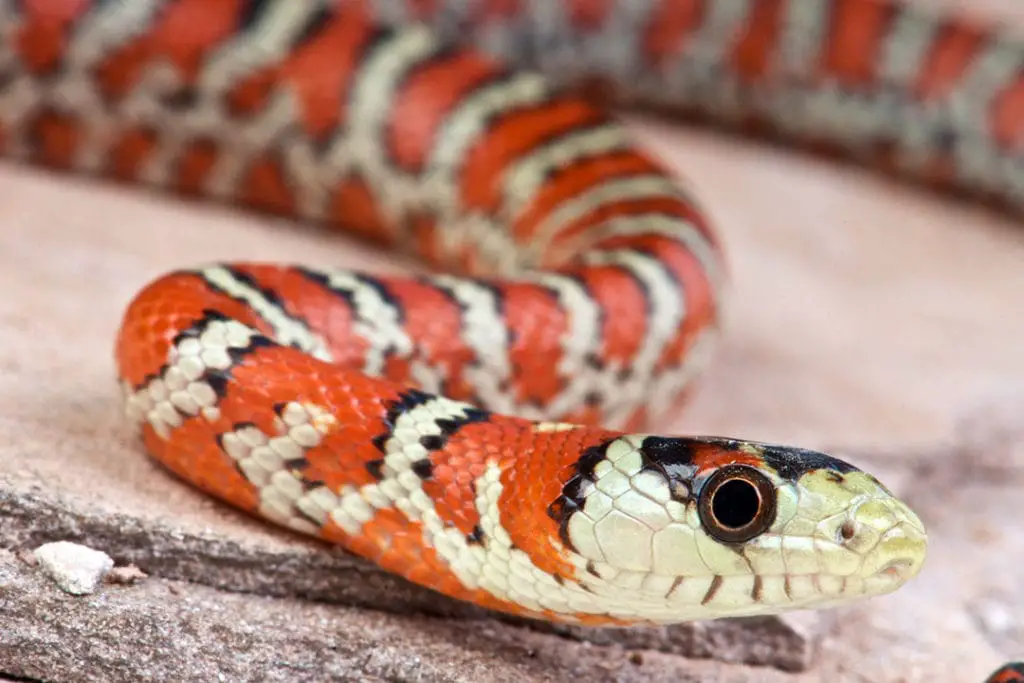
The Arizona Mountain kingsnake (Lampropeltis pyromelana) is known by a few names, including the Sonoran kingsnake.
These snakes are slender and typically stay under 42 inches long. They are typically found in the central and southeastern portions of Arizona.
They are most common in woodland areas in the mountains. The most common coloration of this snake looks very similar to the coral snake native to the same area.
They have bands of red, black, and either white or yellow. The white or yellow bands are bordered by thin black rings and wider red sections.
Their color helps protect them from common predators since most birds and other predators will not attack a banded snake that could possibly be a venomous coral snake. Arizona Mountain kingsnakes also use a foul musk to help protect them from predators.
The strong smell and foul odor will make most predators leave the snake alone. They are rarely seen in the open since they spend their time hidden in rock piles.
They only exit the rock piles they live in to eat or find a mate. Their diet typically includes lizards and rodents. Kingsnakes as a whole will eat nearly anything, including other snakes.
These snakes are somewhat common in captivity and are easy to care for thanks to a docile temperament, easy husbandry, and a good appetite.
You can find a few morphs and be sure to always buy a captive-bred animal. Albino animals are probably the most common morph and tend to have bands of light orange or pink instead of black.
2. California Kingsnake

The California kingsnake (Lampropeltis californiae) used to be considered a subspecies of the common kingsnake. They were recognized as a unique species in a study from 1999.
They are found mainly in the western and southern parts of Arizona. They live in a wide range of habitats but in Arizona, they are typically found in scrublands and low elevation woodlands.
They tend to be between 2.5 and 3.5 feet long as adults. California kingsnakes come in a wide range of appearances but most animals will be dark and light in color.
The dark parts will be brown to black and the light areas can be light yellow, cream, or white. They are typically active from May to September and are known to climb even though most animals are found on the ground.
These snakes will eat nearly anything they can find and have been reported to climb trees to raid bird nests. They are also mostly immune to rattlesnake and coral snake venom and will consume these snakes if they have the chance.
California kingsnakes are incredibly popular pet snakes and make great first snakes. They are easy to care for and can be found in a wide range of color morphs in captivity.
Most morphs found in captivity are from Californian populations. It can be hard to find animals from the Arizona populations in captivity.
It is easiest to find animals that are only F1 or F2 which means either one or two generations in captivity. After that point, most animals are likely mixed with Californian populations or have morphs that make it hard to tell what populations the animals are descended from.
3. Desert Kingsnake
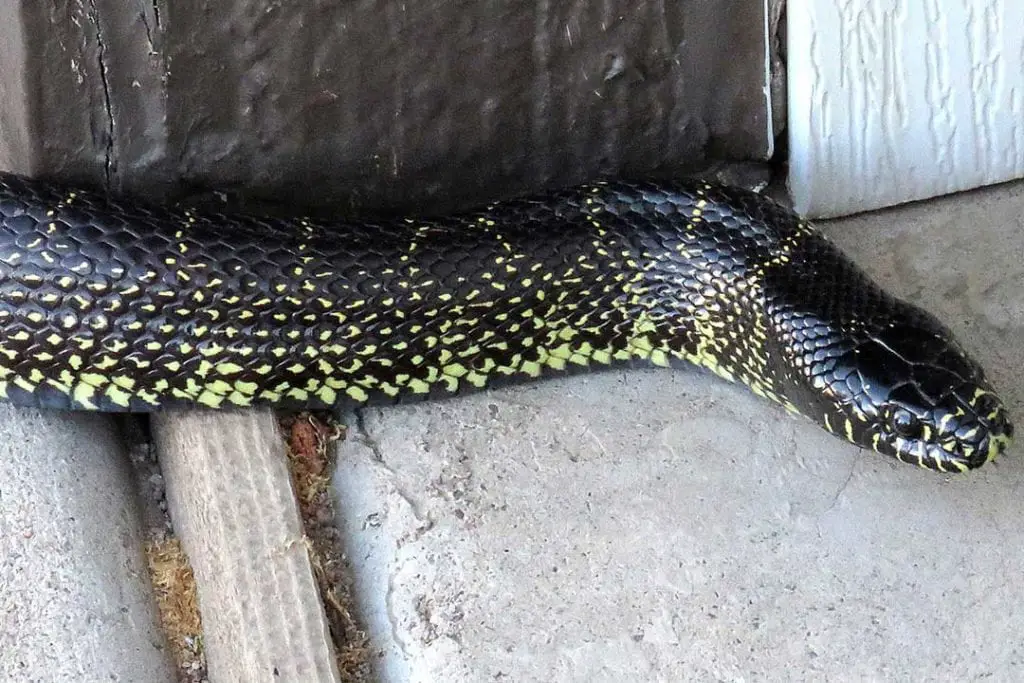
The Desert kingsnake (Lampropeltis splendida) is found in southeastern Arizona. The black kingsnake in the region is considered to be the same species at the time of writing.
They tend to be 3-4 feet but they can reach up to 5 feet. The desert kingsnake is brown or black with yellow speckling. They tend to live in scrublands and grasslands.
They are most visible at night from May to September but they may be active year-round if the temperatures are right. Like other kingsnakes, they lay a clutch of eggs that receive no parental care.
They have a wide diet of vertebrates including other snakes. They can be found in captivity, but most animals are the Mexican black kingsnake subspecies.
They may not be sold under their proper species name since most animals are from lines collected from the wild before the species was known as a separate species.
This also means that most animals in captivity may not have the speckling. It may take some searching if you want to own this species in particular.
4. Arizona Milksnake
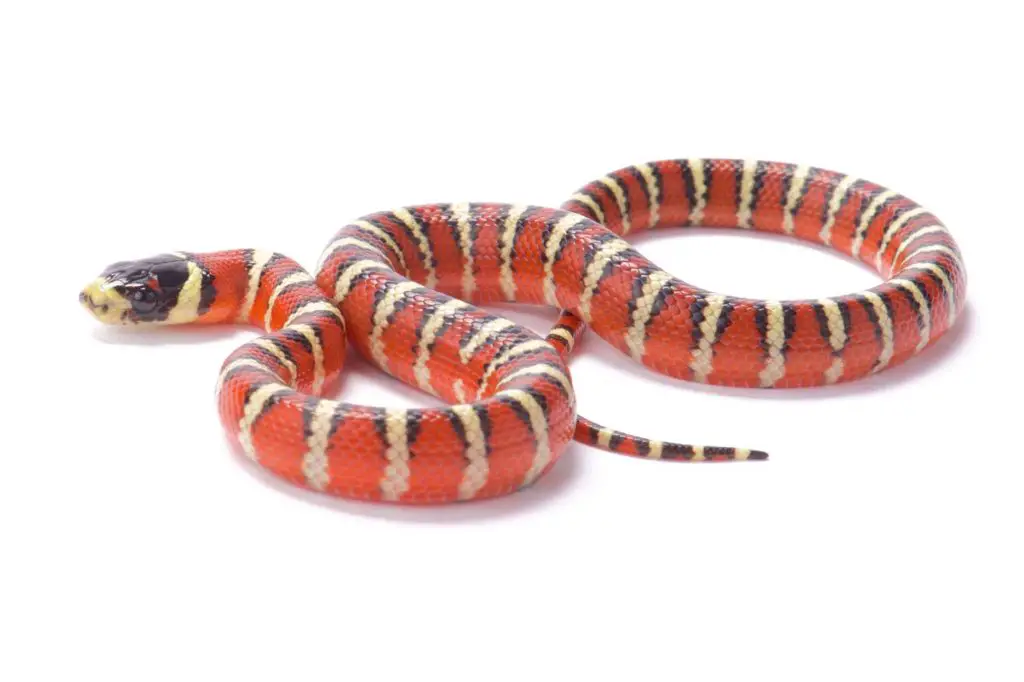
The Arizona milksnake (Lampropeltis gentilis) is the only milksnake found in Arizona. It used to be considered to be a subspecies of the common milksnake, but Ruane proved it was one of seven species.
They are found primarily in southeastern Arizona. They tend to stay under 5 feet long. They have a banded appearance much like the Arizona Mountain kingsnake but their bands tend to be more even in appearance.
They eat many vertebrates including other snakes. They lay a clutch of eggs that are buried in a hidden location. Newly hatched milksnakes will be able to hunt and survive as soon as they leave the egg.
They are common in captivity but are typically not sold as their true species.
It is best to ask the breeder to find out where the animals are from. Since most kingsnakes and milksnakes are closely related, it is common to find hybrids in captivity.
5. Knobloch’s Mountain Kingsnake
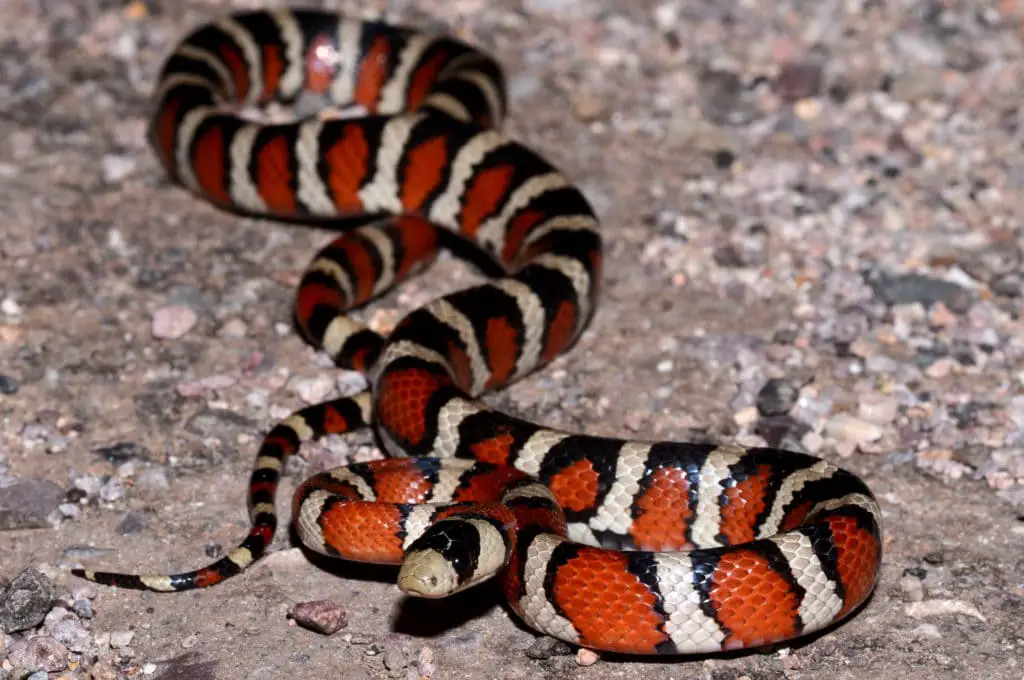
The Knobloch’s mountain kingsnake (Lampropeltis knoblochi) is only found in the mountains south of the Sierra Madre Occidental. They prefer the sky islands at the top of mountains.
They tend to stay under 43 inches long. Like other kingsnakes in Arizona, they are orange-red, yellow or white, and black banded.
The black tends to not go down the sides and is instead found only along the spine located on either side of the pale rings.
They are easy to mistake for the Arizona Mountain kingsnake, but they are only found in the far south while the Arizona Mountain kingsnake will be further north. They tend to be found on the ground or on rocks, but they will climb trees looking for prey.
They will be active during the day most of the year and at night during the warmer months. They eat birds, frogs, small mammals, and reptiles.
They can be found in captivity, but they tend to be a bit more nervous. They are somewhat rare since most will be sold under the name of the Arizona Mountain kingsnake.
They are still good pets and do tame down well. If you want to identify this species for sure, look for the black along the back and absent from the sides of the animal.
About King Snakes in Arizona
This section answers some common questions about kingsnakes. If your question isn’t answered here, please leave a comment below.
Where do Arizona Kingsnakes Live?
Arizona kingsnakes can be found over most of the state. These animals do tend to be more nocturnal during the hotter months, so you may not see one very often.
Some species are only found in the mountains while others may be found closer to human settlements. Many species are most commonly found in the mountains, but they are also found in nearly every area of the state.
Make sure you learn how to identify which ones live in your area and how to tell them apart from the Arizona coral snake.
Are Arizona Kingsnakes Venomous?
Arizona kingsnakes are not venomous. While some Colubrids are mildly venomous, kingsnakes do not have venom. They kill their prey with constriction.
A kingsnake will strike and could up prey before squeezing very tightly until the prey animal dies. This process is actually very fast since constrictors kill prey by cutting off the flow of blood to the brain.
Kingsnakes as a whole are some of the strongest constrictors for their size. They do look very similar to the venomous Arizona coral snake, so this may be the source of rumors that they are venomous.
Conclusion
There are numerous kingsnake species in Arizona, and future studies may help clarify the species that live in the states.
Kingsnakes in Arizona are known to interbreed both in captivity and in the wild, so an animal with an unusual appearance may be a hybrid.
In captivity, it can be hard to identify which species a kingsnake is.
Since Arizona kingsnakes are known so poorly, it can be hard to find captive-bred animals that are specifically from the state. If you have any questions or comments, please leave them below.
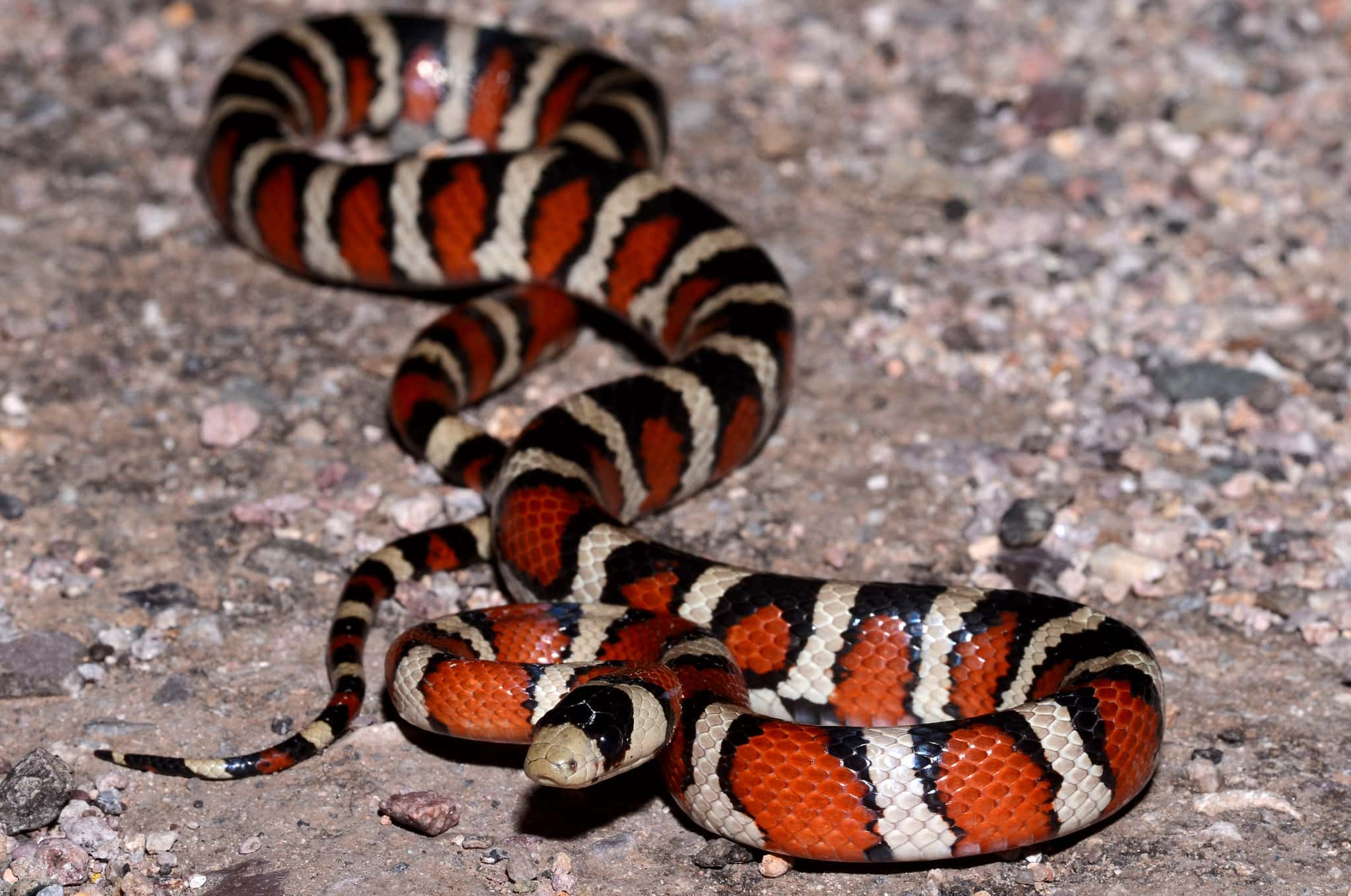
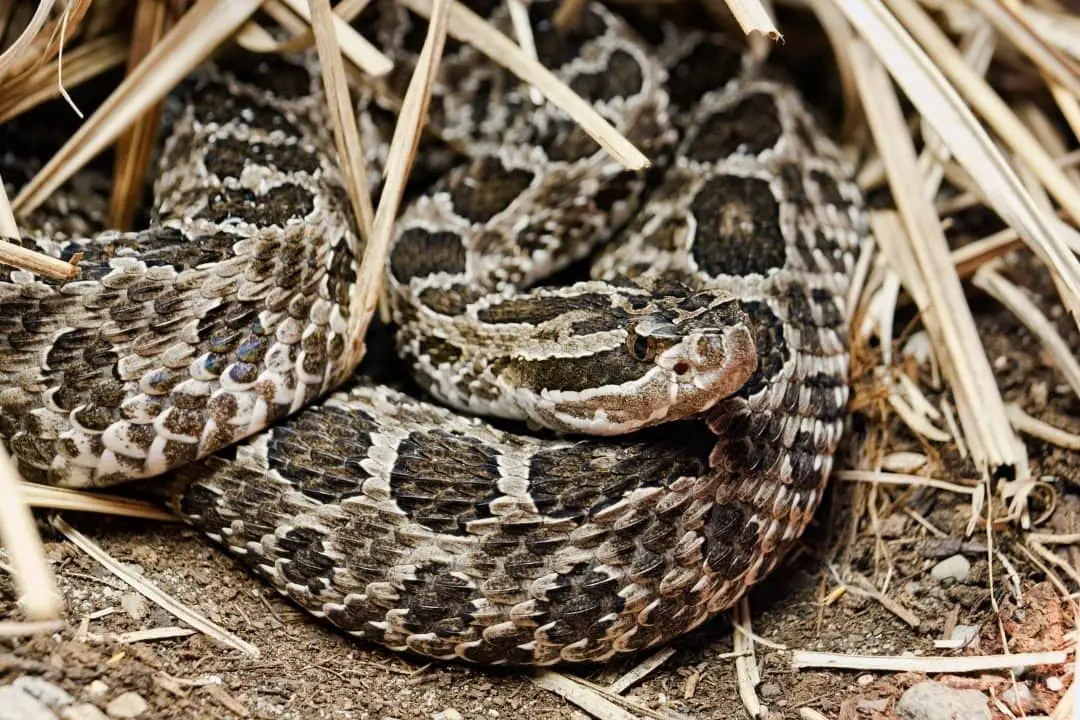

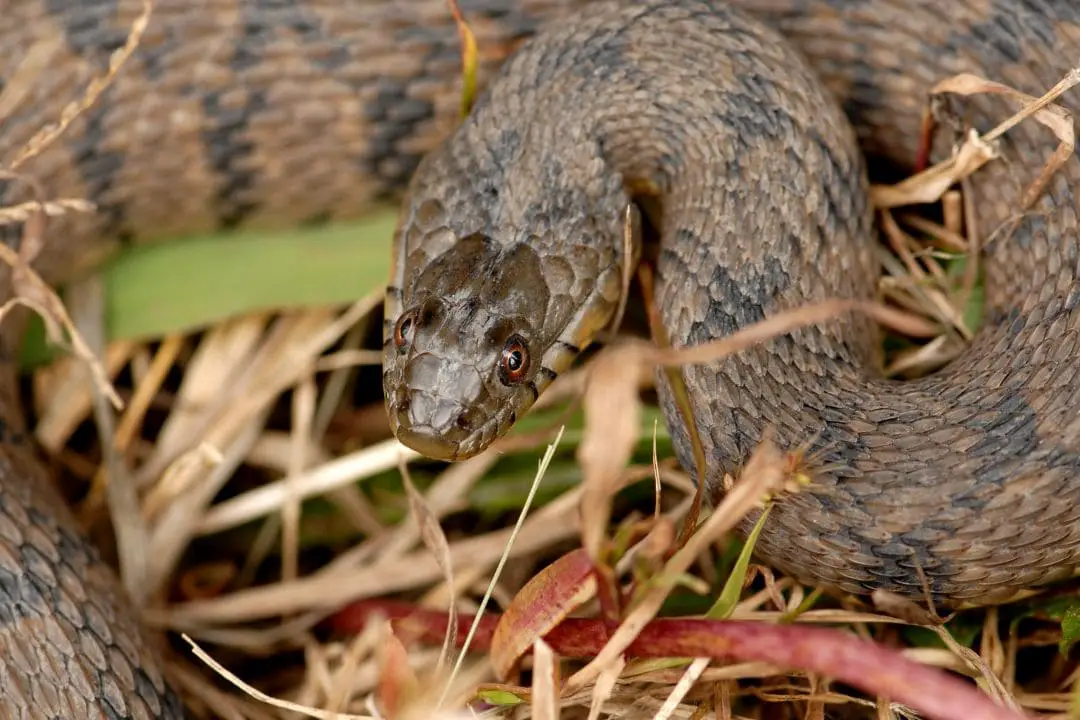
Great website! The photos are very good and helped with kingsnake identification. Will visit again, i’m sure!
Thank you for this website. Personally, I don’t like snakes, but my cat likes to kill them, and lizards too, which I do like. I’ve been trying to train him to leave them alone, especially the horned toads. How would I pick up the kingsnake to relocate it to the other side of the fence, and would that be pointless if it’s living under the patio stones and slithers back there?